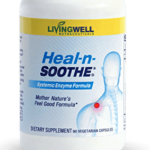According to information a strong core and abdominal muscles are essential to defending against lower back pain or healing and retaining a healthy back.
I would like to show you a few core stability exercises and abdominal muscle exercises. Incorporating stability exercises for your core into your normal workout program can be a fast and simple means to address muscle imbalances, minimize lower back pain and discomfort, and avoid future occurrences of back pain by strengthening your core and complete body together.
Let’s define what is considered to be your core. Fundamentally, everything from your hips and waist to your neck is considered to be your core. Of course, this includes your abdominal muscles, middle and lower back as well as many distinct muscle groups in the equation. Again and again, this area of your body is also known as torso (or the “trunk” of your body). Bear in mind that the core is also what stabilizes the spine and so having a safe set of stability exercises for your core workout routine is of course highly vital.
Unfortunately, like a multitude of things core stabilization is a buzz phrase that is utilized frequently and misunderstood in many circumstances. More or less so, when many patients think of getting a awesome core, back pain sufferers imagine attempting a lot of sit-ups and crunches to attain a stomach of washboard abs they’d be proud to take their shirt off and show it to anyone. Nonetheless, this is not what core stabilization is about.
The majority of patients I have come into contact with have believed that strong abdominal muscles alone will supply them with a strong core. Regrettably, strong abdominal muscles by themselves are frequently not ample.
Research does show that when a disc is swelling, the fluid inside of the disc leaks out and the disc collapses inwards creating inflammation to the spine many a time. Essentially, when this develops, the ligaments surrounding the spine and disc slacken up and can no longer hold the spine in a tight, rigid, and protected posture. Without a doubt, without ligamentous support, the vertebrae can slide around on top of the disc and consequently produces a stress that is the start of a number of sorts of back pain. One exercise is known as V-Up. To start, first lie down on your back with legs and arms extended while maintaining them straight. For the next step tighten your abdominal muscles and raise your hands and feet toward one another, and then rest for a minute. You should do 3 sets of 10 reps each. You can add additional sets or reps as you progress.
It is said that the deep abdominal muscles are vital to preserving back health and there are also small muscles that line the vertebrae directly that aid to give stability for rotating and/or bending tasks. This is why these abdominal muscles lock up if there is any pain to prevent further injury.
The final exercise is called the Knee to Elbow Bridge. This stability exercise for your core will target all the needed muscle groups and will give you strong core muscles and abdominal muscles. Undoubtedly, only specifically directed exercises will strengthen these muscles, so don’t get the idea that the ab crunch machine at the local gym will produce what you need. Besides, be careful of exercise suggestions from someone else who has had back pain due to the fact that their case will imaginably be different than yours and require a different treatment. You may have heard you should always visit your doctor for counsel before beginning any workout session.
Utilizing exercise alone many back pain sufferers can expect a good result in a rather short period of time, typically about six weeks. Don’t forget, some individuals will recover faster depending on the nature and severity of the situation, but others take a while longer and this is often the people who have had back pain for a longer period of time. Personalized physical therapy workouts regularly use a series of back mobilizations along with other stretching and core exercises giving you a big effect without delay – the benefit of having supervision.


